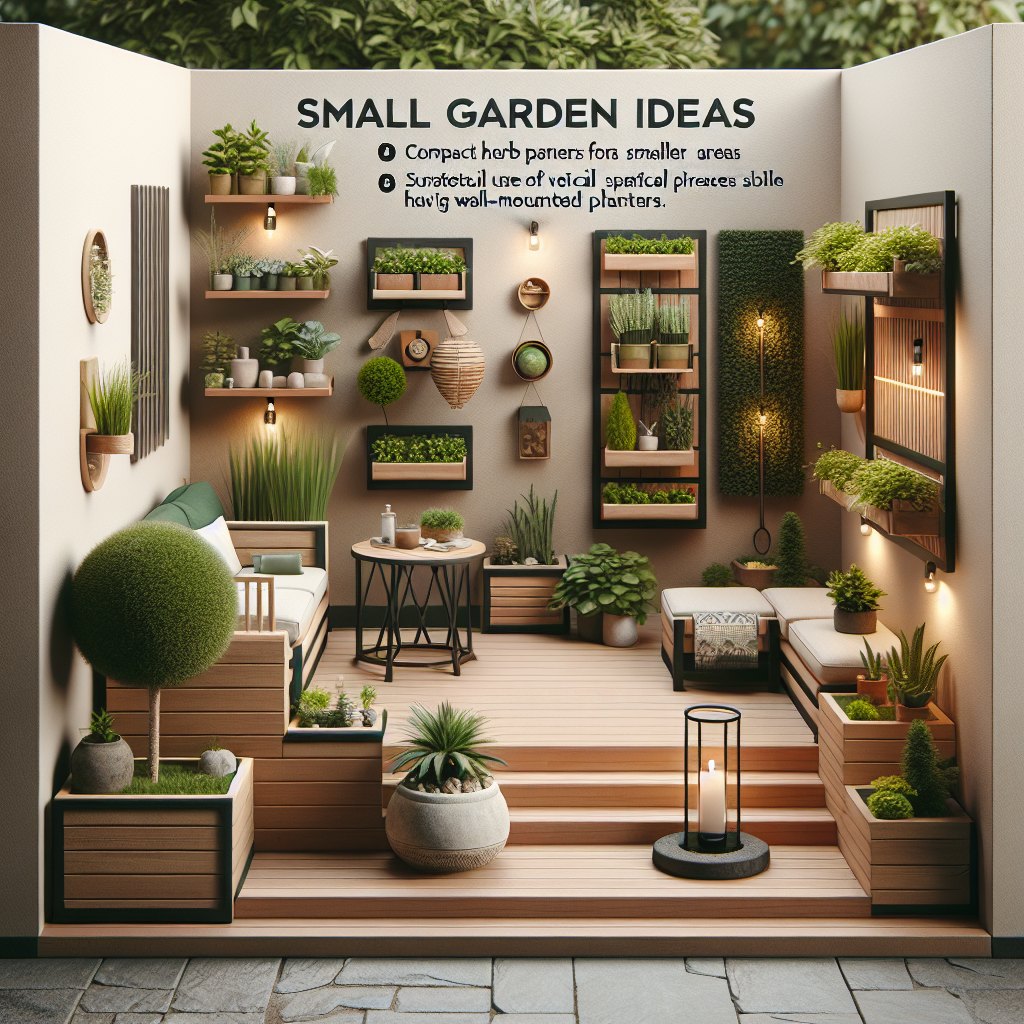An Overview of Small Garden Construction
Whether you’re looking to spruce up your balcony, backyard, or just a little corner of your home, a small garden can do wonders.
Though compact, tending to a small garden can bring about substantial aesthetic value and even tranquility to your space.
But how do you start building such a space? And what should you consider in order to yield the best results?
This article aims to answer these questions and more by walking you through step-by-step on how to construct your very own small garden.
From planning your space to understanding what ‘small’ means in gardening, or how to choose the best vegetables and designing a visually pleasing arrangement – we’ve got you covered. We even offer tips on optimum maintenance and avoiding common mistakes, to ensure your tiny garden thrives.
So, are you ready to start your small, but impactful, green journey? Dive right in!
Table of Contents
A Handy Guide: How to Construct a Small Garden
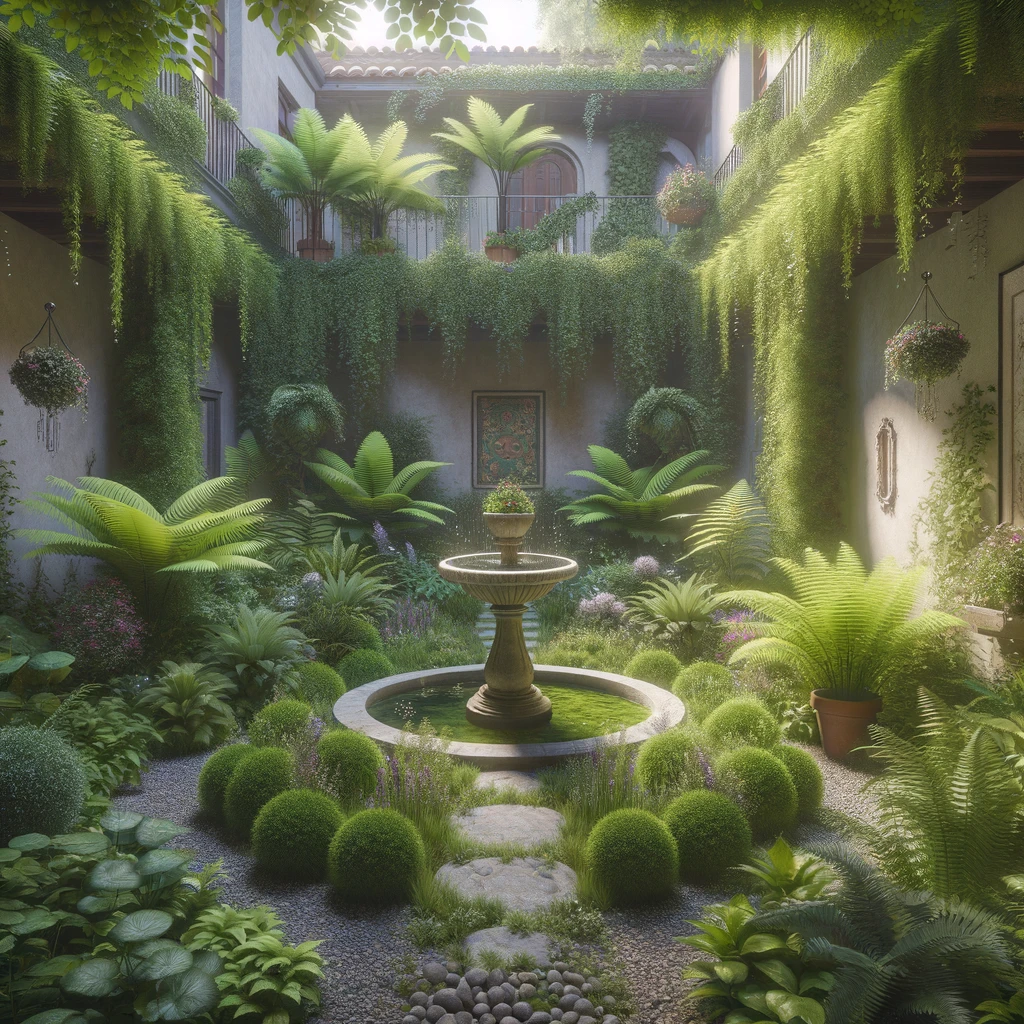
Introduction to Garden Construction
The true beauty of a small garden is that it provides a compact green space that adds life and value to your environment, irrespective of the property size. Constructing a small garden might seem daunting at first, but with the right guidance, anyone can do it!
Steps for Building a Small Garden
Here’s a step-by-step guide to take you through the construction of your small garden.
- Step 1: Plan Your Space
- Step 2: Choose Your Plants
- Step 3: Prepare the Area
- Step 4: Plant Your Choices
- Step 5: Maintain Your Garden
Step 1: Plan Your Space
Planning is the foundation of any successful garden. Start by observing your chosen area at different times of the day to understand the patterns of sunlight and shade. Consider the following points:
- Sunlight: Determine where the sun shines the longest and which areas are shaded. Most vegetables and flowering plants need at least six hours of direct sunlight per day.
- Wind and Weather: Take note of prevailing winds and areas prone to standing water after rain. These factors can influence plant growth and garden placement.
- Accessibility: Ensure your garden is easily accessible for planting, watering, and maintenance. Consider pathways or stepping stones to avoid compacting the soil.
- Soil Quality: Test the soil’s pH and nutrient levels to understand what amendments might be necessary. This can help you choose plants that will thrive in your garden.
Create a sketch or layout of your garden space, including plant placements and any garden structures like trellises or raised beds. This visual plan will guide you through the planting process and help you achieve a balanced design.
Step 2: Choose Your Plants
Selecting the right plants for your garden is crucial. Consider the following aspects to make informed choices:
- Size and Growth: Choose plants that will fit well in your space as they grow. Be mindful of both height and spread to avoid overcrowding.
- Light Requirements: Match plants to the light conditions of your garden. Shade-loving plants won’t thrive in direct sunlight and vice versa.
- Water Needs: Group plants with similar water requirements together to make watering more efficient. Drought-tolerant plants can reduce the need for frequent watering.
- Garden Design: Think about color, texture, and seasonality. Mixing perennials and annuals can provide year-round interest, while herbs and vegetables add functionality.
- Hardiness: Select plants suited to your climate and hardiness zone to ensure they can withstand local weather conditions.
Visit a local nursery or garden center for expert advice and to find plants that are best suited for your area.
Step 3: Prepare the Area
Proper preparation of your garden area sets the stage for healthy plant growth. Follow these steps:
- Clear the Space: Remove any existing grass, weeds, or debris. Use a garden fork or spade to dig up the soil and break up clumps.
- Improve Soil Quality: Add organic matter such as compost or well-rotted manure to enrich the soil. This improves drainage, provides nutrients, and enhances soil structure.
- Level the Ground: Ensure the soil surface is level, which helps with water distribution and root growth. If you’re creating raised beds, build the frames and fill them with a mix of topsoil and compost.
- Mulching: Consider adding a layer of mulch to retain moisture, suppress weeds, and improve soil temperature regulation.
Take your time with this step, as well-prepared soil will lead to healthier plants and a more manageable garden.
Step 4: Plant Your Choices
With your area prepared, it’s time to start planting. Follow these guidelines for optimal results:
- Placement: Begin by placing your plants according to your plan, ensuring taller plants are at the back and shorter ones at the front. This not only creates a visually appealing layout but also ensures all plants receive adequate sunlight.
- Digging Holes: Dig holes slightly larger than the root balls of your plants. This gives roots room to spread and establish themselves.
- Planting Depth: Place plants in the holes at the same depth they were growing in their pots. For seeds, follow the depth instructions on the seed packet.
- Watering: Water each plant thoroughly after planting to help settle the soil around the roots. This initial watering is crucial for reducing transplant shock.
- Spacing: Leave enough space between plants to accommodate their mature size. Overcrowding can lead to poor air circulation and increased susceptibility to pests and diseases.
Take your time and handle plants gently to avoid damaging roots or stems during the planting process.
Step 5: Maintain Your Garden
Regular maintenance is essential to keep your garden thriving. Incorporate these tasks into your routine:
- Watering: Water your plants regularly, especially during dry spells. Aim for deep, infrequent watering to encourage strong root growth. Early morning is the best time to water, as it reduces evaporation and fungal growth.
- Weeding: Remove weeds regularly to reduce competition for nutrients and water. Mulching helps suppress weeds, making this task easier.
- Pruning and Deadheading: Trim dead or damaged branches and spent flowers to promote new growth and maintain plant health. Pruning also helps shape plants and encourages flowering.
- Fertilizing: Apply a balanced fertilizer according to the needs of your plants. Organic options like compost tea or fish emulsion are beneficial and eco-friendly.
- Pest Control: Monitor your garden for pests and diseases. Use natural remedies like neem oil or insecticidal soap to manage infestations, and encourage beneficial insects like ladybugs and bees.
Regularly inspecting your garden helps catch problems early and keeps your plants looking their best. Enjoy the process and take pride in your growing garden!
Essential Tools and Materials
| Tools | Materials |
|---|---|
| Garden Shovel | Quality Soil |
| Rake | Compost |
| Garden Hose or Watering Can | Selected Plants |
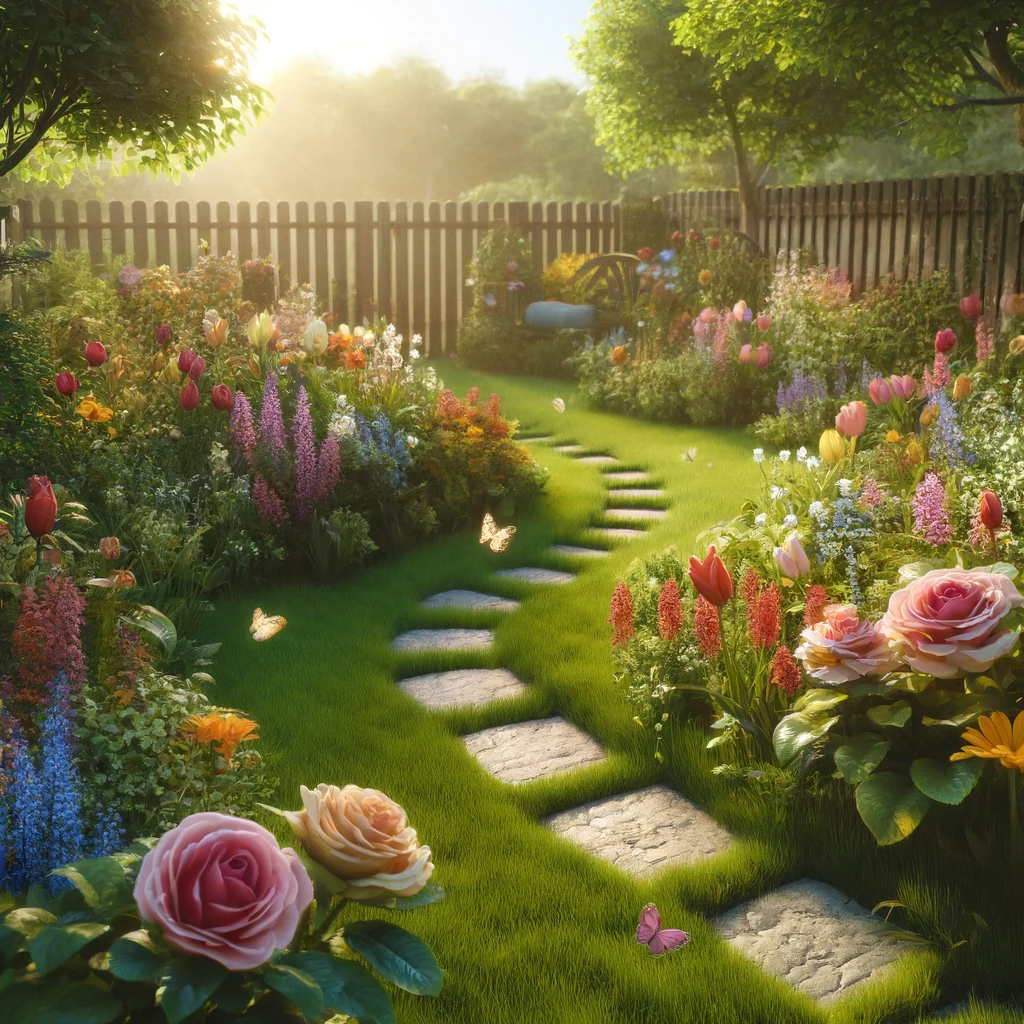
Scaling Size: Defining What Makes a Garden “Small”
Understanding the Concept of “Small” in Gardening
When we hear “small garden,” the term “small” can be quite subjective and relative to each person’s perception. What might be small to one might be plenty spacious to another. In gardening, however, “small” typically refers to the physical area of land a garden takes up.
Plot Size of a Typical Small Garden
Though there’s no official definition, most small gardens are generally between 100 and 200 square feet. This size is large enough to plant a variety of greenery, yet compact enough to manage easily.
Importance of Space Optimization in Small Gardens
A key feature of small gardens is not their footprint, but how you use that space. A well-designed small garden can give an illusion of a larger space, even when you’re working within a limited square footage – making space optimization crucial.
Tips for Effective Space Optimization
- Vertical Gardening: Growing plants vertically not only saves space but also creates a visual focal point. Trellises, wall-mounted planters, and vertical plant stands are excellent tools.
- Choosing Size-Appropriate Plants: Small gardens require careful plant selection. Opt for dwarf or mini variants of your favorite plants to ensure they do not outgrow your garden’s physical bounds.
- Layering: Implement different heights and layers in your garden. Using raised planters or hanging pots can add depth and vertical interest.
Pros and Cons of Small Gardens
Benefits of Small Gardens
- Easy Maintenance: Smaller gardens typically require less time, effort, and resources to maintain. This allows more time for enjoyment and less stress.
- Cosiness: Small gardens can create an intimate, cozy setting perfect for relaxation and solitude.
- Sustainable: Small gardens generally require fewer resources and thus have a smaller environmental footprint.
Limitations of Small Gardens
- Space Constraint: You might be limited in terms of what you can plant and the design plans you can implement.
- Lack of Privacy: Depending on the location of your garden, a small garden in a compact living area may lack desired privacy.
Common Mistakes to Avoid
When you’re constructing a small garden, some common pitfalls could hinder the growth of your plants and the overall aesthetics. These include overcrowding plants, skimping on the quality of the soil, and lack of sufficient watering. Avoiding these mistakes can help your small garden thrive.
Remember, the size of your garden does not determine its potential. Regardless of how small your garden may be, with proper planning, selection, and maintenance, you can transform it into a beautiful, lush, and vibrant corner.
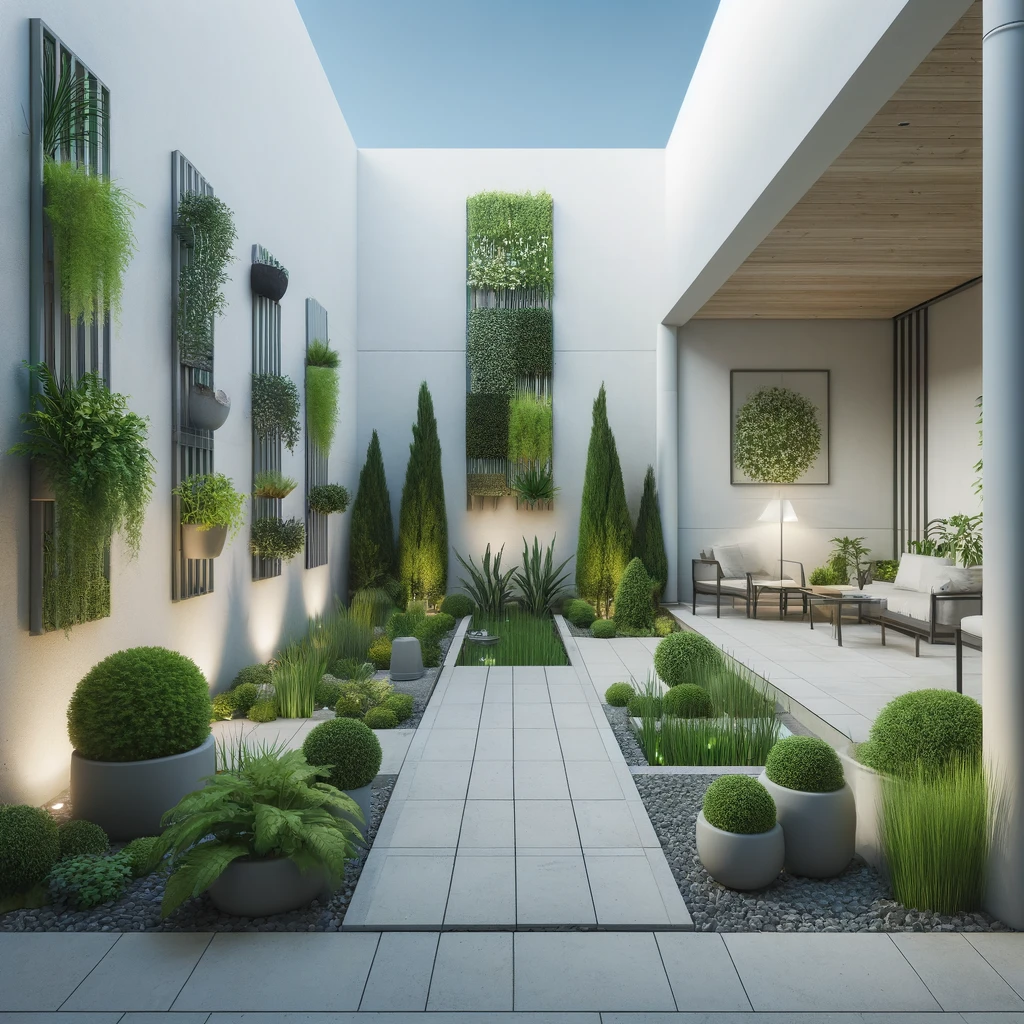
Choosing Suitable Vegetables for Your Small Garden
The Importance of Garden Sustainability
When choosing what to grow in a small garden, it’s crucial to consider sustainability. In a small garden, your plant selection plays an integral part in ensuring your garden can continually provide without overwhelming the space. In such instances, focusing on vegetable varieties can be a brilliant strategy for several reasons.
Benefits of Growing Vegetables in a Small Garden
- Healthy Eating: Growing your own vegetables can lead to healthier eating habits due to guaranteed high-quality, organic produce.
- Extended Growing Season: Vegetables often have shorter growing seasons which means you can plant several times a year.
- Savings: Growing your own food can save you money on grocery shopping.
- Satisfying: Lastly, there’s a unique sense of satisfaction and accomplishment from growing your own produce from seed to plate.
Criteria for Choosing the Best Vegetables
When selecting vegetables for your garden, consider the available space, sunlight pattern, and the local climate. Additionally, consider vegetables that you and your family enjoy eating. This ensures your efforts are rewarding and fulfilling.
Space Requirements
Vegetables, like other plants, require sufficient space to grow effectively. Some vegetables are ideal for small spaces due to their small size or vertical growth pattern. This includes plants such as lettuce, kale, spinach, and most herbs.
Light and Climate Needs
Most vegetables require as much sunlight as possible – at least 6 hours of direct sunlight daily. Thankfully, most small gardens are designed to maximize the available sunlight. Tomatoes, cucumbers, and zucchini, for instance, love the sun and grow well in warm climates.
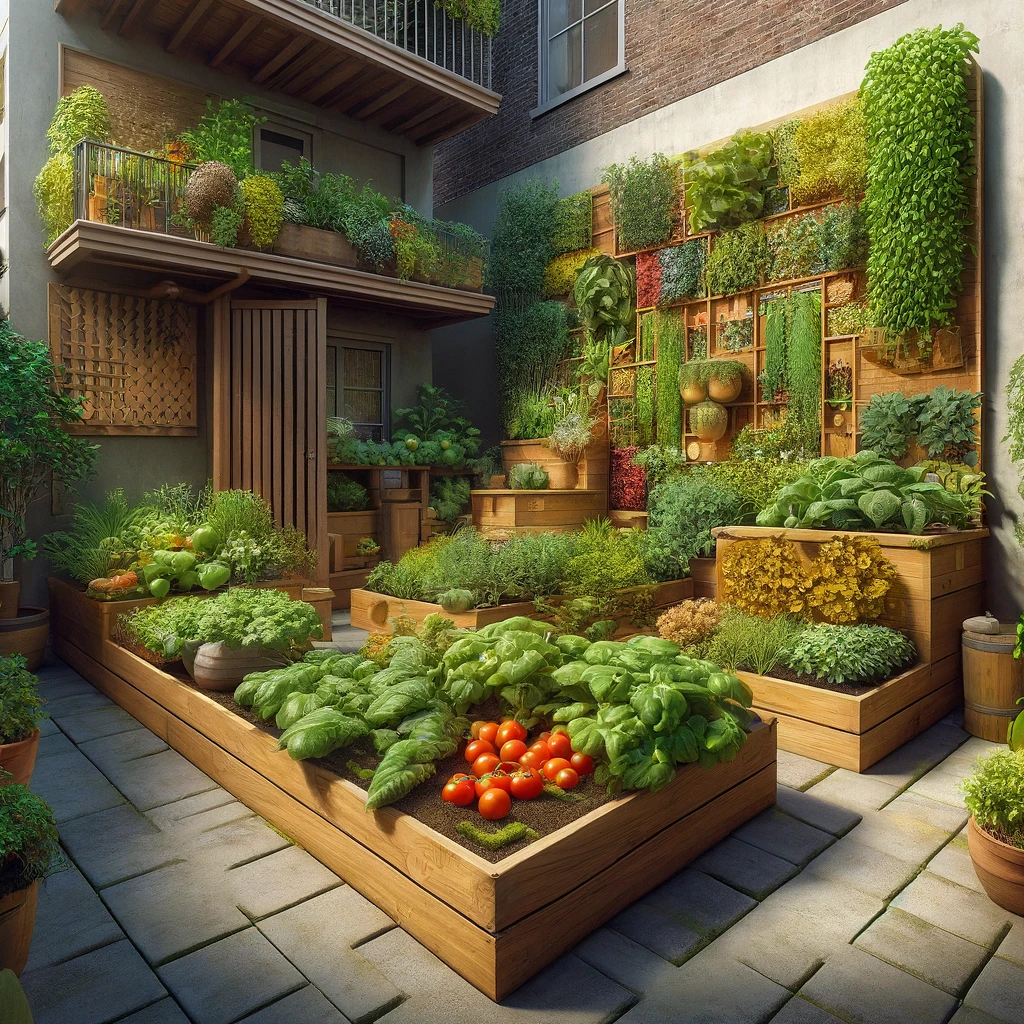
Best Vegetables to Grow in a Small Garden
Tomatoes
Tomatoes are easy to grow and take up little space, especially when trellised or caged for vertical growth. Compact variety options include ‘Patio Tomatoes’ or ‘Tiny Tim Tomatoes’.
Salad Greens
Lettuce, spinach, and arugula are excellent salad green choices as they don’t require much space to grow and can be harvested continually through the season.
Peppers
Peppers, especially sweet bell peppers and hot peppers, do well in small spaces due to their upright growth. They’re also heat-loving plants, good for a sunny spot.
Radishes
Radishes are perfect for small gardens as they grow quickly and take up very little space. They also have a relatively short harvesting time.
Herbs
Most herbs, like basil, dill, and mint, do great in small gardens. They take up minimal space and can even be grown in containers to maximize space.
Vegetables to Avoid
Not all vegetables are small-garden friendly. Some, like corn and vining squash, demand space to spread out, making them unsuitable for a small garden. Take into account the size and growth habits of vegetables before planting them.
Structuring Your Vegetable Garden
You can create a thriving vegetable garden, no matter the space constraints. Use trellises or poles for vertical growth and containers or raised beds to maximize space. Incorporate a variety of plants to ensure a healthy mix and to foster beneficial insect activity.
Rotation and Companion Planting
It’s beneficial to rotate your crops to enrich your soil and ward off pests and diseases. Moreover, you can make use of companion planting techniques to maximize space and increase the productivity of your garden – such as planting tomatoes with basil and peppers.
Ultimately, planting a vegetable garden can be a joyous, fulfilling exercise. Through careful planning, smart plant selection, and attentive care, even the most miniature garden can produce a surprising variety and quantity of fresh, tasty vegetables.
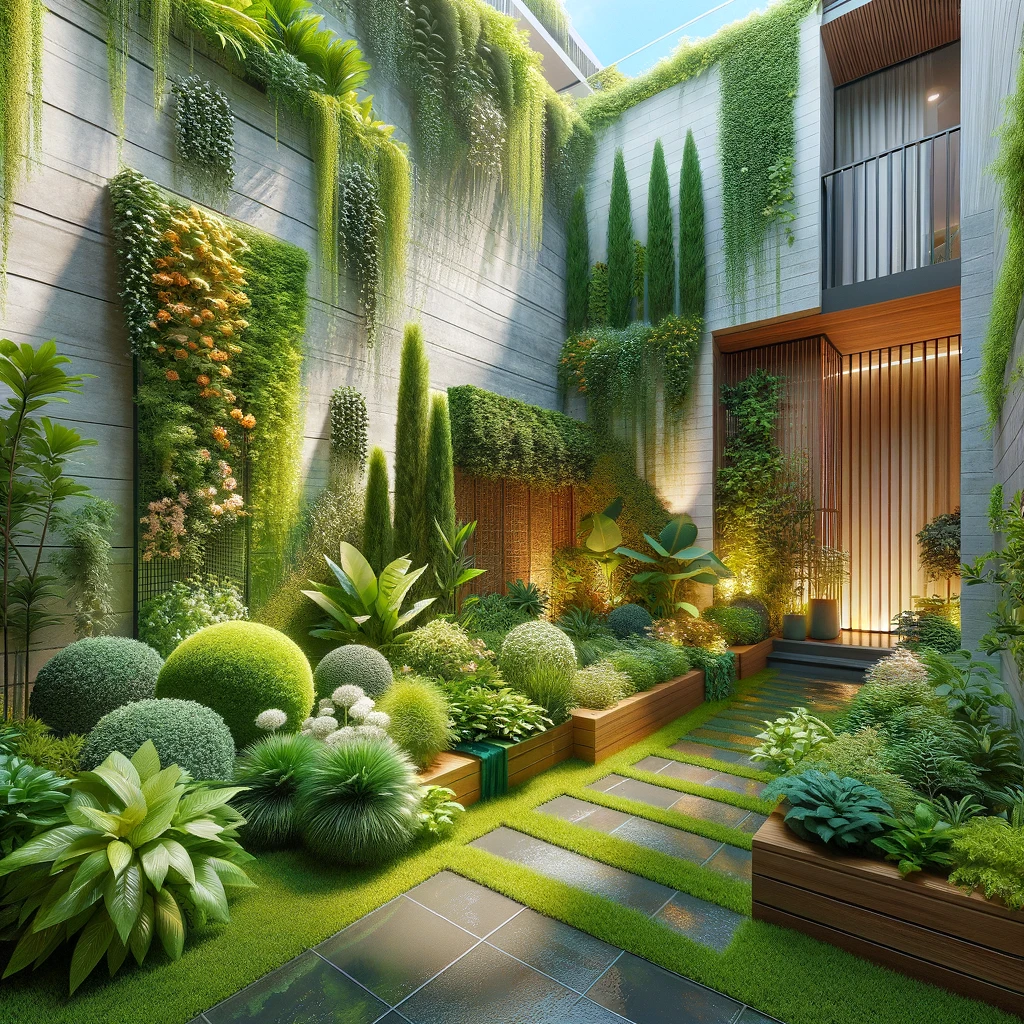
The Art of Small Garden Design
Arrangement in a Small Garden
How you arrange your plants in a small garden can make a significant difference to its beauty and functionality. A good arrangement ensures all plants get an adequate amount of sunlight, soil nutrients, and water. Moreover, an aesthetically pleasing arrangement creates an inviting and relaxing environment.
Arrange Based on Light Needs
Some plants need full sun, while others thrive in partial shade. Arrange your garden such that each plant gets the right amount of sunlight depending on its needs. Place sun-loving plants in the most exposed part, while shade-tolerant plants can be located under larger ones or in shadows of structures.
Arrange According to Watering Needs
Some plants need more water than others. Group together plants with similar watering needs. This makes watering easier and ensures that each plant gets the correct amount of water.
Creating a Beautiful Garden Layout
When it comes to aesthetics, your small garden should not only host a variety of plants but also use the space effectively to create an attractive visual landscape. Here are some tips for creating a beautiful garden layout:
- Use Color Effectively: Using color in your garden can help create certain moods or emphasize certain areas. Bright, warm colors (reds, oranges, yellows) stand out and draw attention, while cool colors (greens, blues, purples) recede into the background and can make a garden seem larger.
- Create a Focal Point: A focal point draws the eye and helps to divide the garden visually, which can make it seem more spacious. This could be a colorful plant, a striking piece of garden art, or even a dedicated seating area.
- Use Different Heights: Include plants and structures of different heights to give your garden a sense of depth and interest. Put taller plants or structures at the back, medium-sized in the middle, and shorter at the front. Use hanging plants or climbers to take advantage of vertical space.
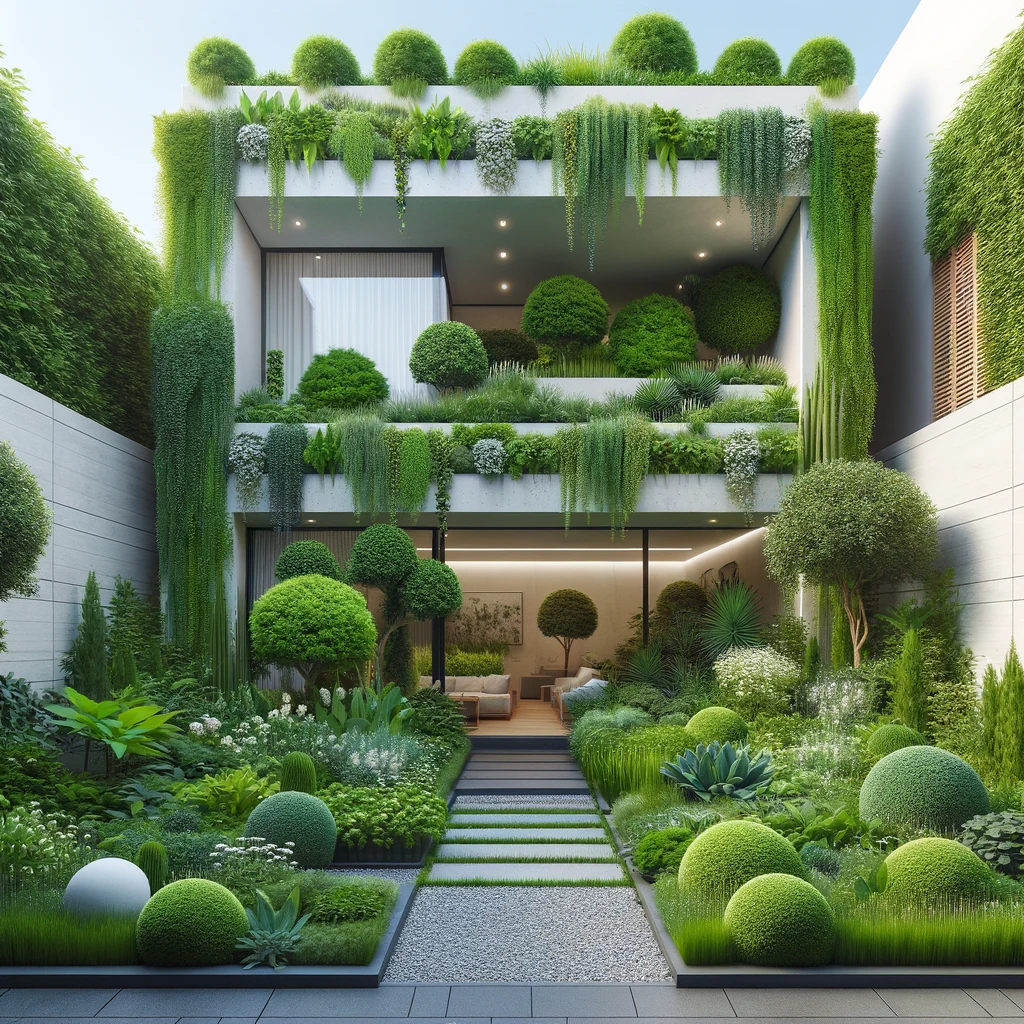
Building Your Garden – Planting and Maintenance
Planting Your Small Garden
While planting may seem like a fairly straightforward act, strategic planting can help maximize your small garden’s health and visual appeal.
Key Planting Principles
- Plant in Groups: Plants look best when they’re grouped together, creating a sense of abundance and visual interest. Try planting in odd numbers, as these groupings tend to look more natural.
- Use Containers: In small gardens, containers are your best friend – they’re portable, versatile, and available in various styles. Containers also help control the growth of plants that may otherwise spread too quickly in a garden bed.
- Strategic Positioning: Position plants with attention to their mature size, not their size when you plant them. This avoids overcrowding and competition for resources later.
Maintaining Your Small Garden
Maintenance goes beyond regular watering and weeding; it also involves observing your garden and responding to its needs.
Regular Garden Care
To keep your garden vibrant and healthy, remember to:
- Regularly Prune: Reduce the size of plants that grow too large. This can stimulate fresh growth, improve plant health, and maintain the overall design of your garden.
- Control Pests: Keep an eye out for pests and deal with them promptly to avoid extensive damage.
- Weed Regularly: Weeds compete with your plants for nutrients. Regular weeding keeps them under control.
With due consideration for plant needs, aesthetic appeal, and regular maintenance, you can create and sustain a lush, beautiful small garden that goes beyond the constraints of its size. Happy gardening!
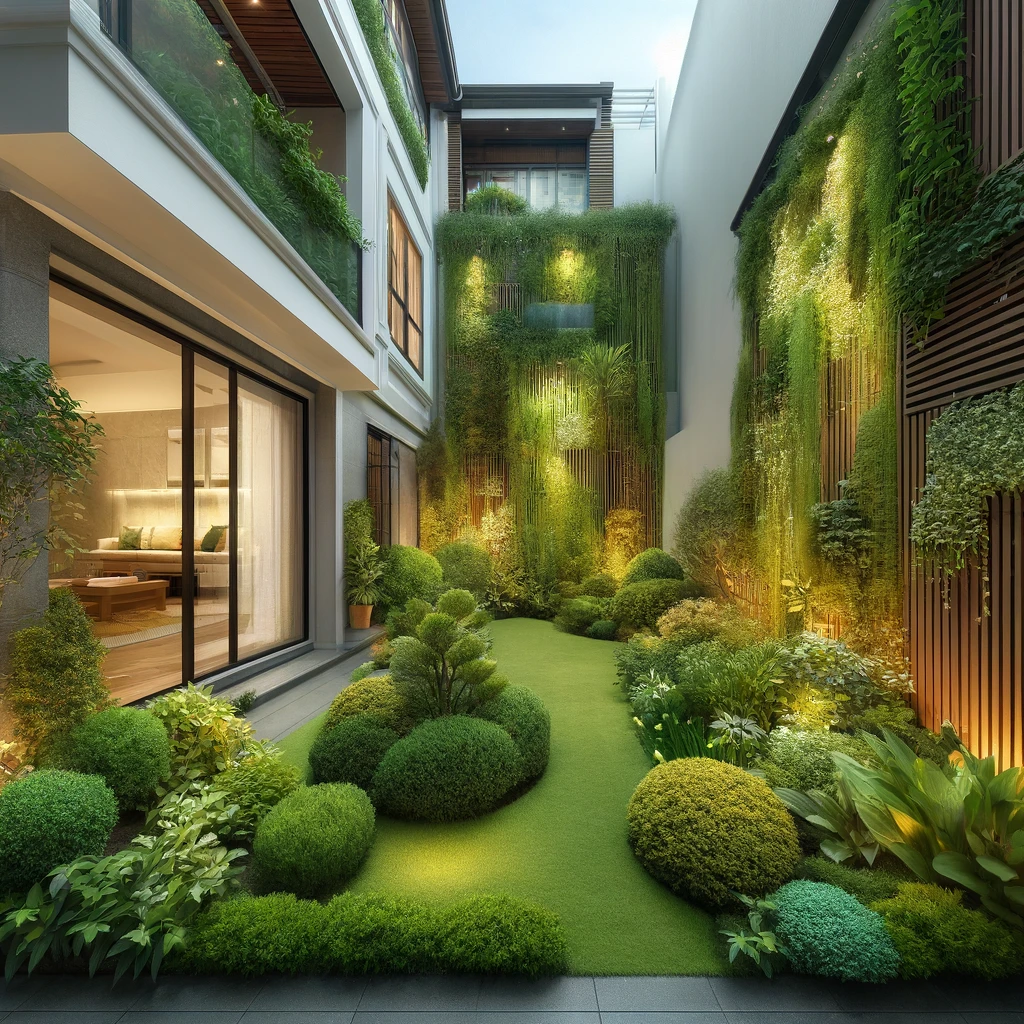
Conclusion: The Joy of Creating and Maintaining a Small Garden
Despite the challenges of limited space, constructing a small garden is an attainable goal. With careful planning, smart plant selections, and proper care, your small garden can flourish into a vibrant and inviting retreat. The art of arranging plants according to their specific needs regarding sunlight and water will not only enhance their viability but also greatly add to the visual appeal of your garden.
Whether you’re growing a variety of colorful flowers, fresh and delicious vegetables, or a combination of both, remember to enjoy the process! From the first seed sown to the first bloom observed or the first vegetable harvested, take comfort in the lush oasis you’ve created. With minor adjustments, your small garden can continuously offer visual delight, aromatic pleasure, and potentially, sustenance.
FAQ
What does “small” actually mean in a small gardening context?
“Small” can be relative and subjective in different contexts. However, in gardening, a small garden typically refers to a garden that is between 100 and 200 square feet.
What’s the best way to optimize space in my small garden?
Techniques like vertical gardening, choosing size-appropriate plants, and layering can help optimize space in a small garden and give the illusion of a larger space.
What are the benefits of growing vegetables in a small garden?
Growing vegetables can lead to healthier eating habits, an extended growing season, savings on grocery shopping, and a unique sense of satisfaction from growing your own produce.
What factors should I consider while arranging plants in my small garden?
Plant arrangement in a small garden should be done according to the light and watering needs of the plants. Each plant should get the right amount of sunlight and water it needs.
What are some practices for maintaining a small garden?
Regular pruning, controlling pests, and weeding are key practices to maintaining a healthy, vibrant garden.
